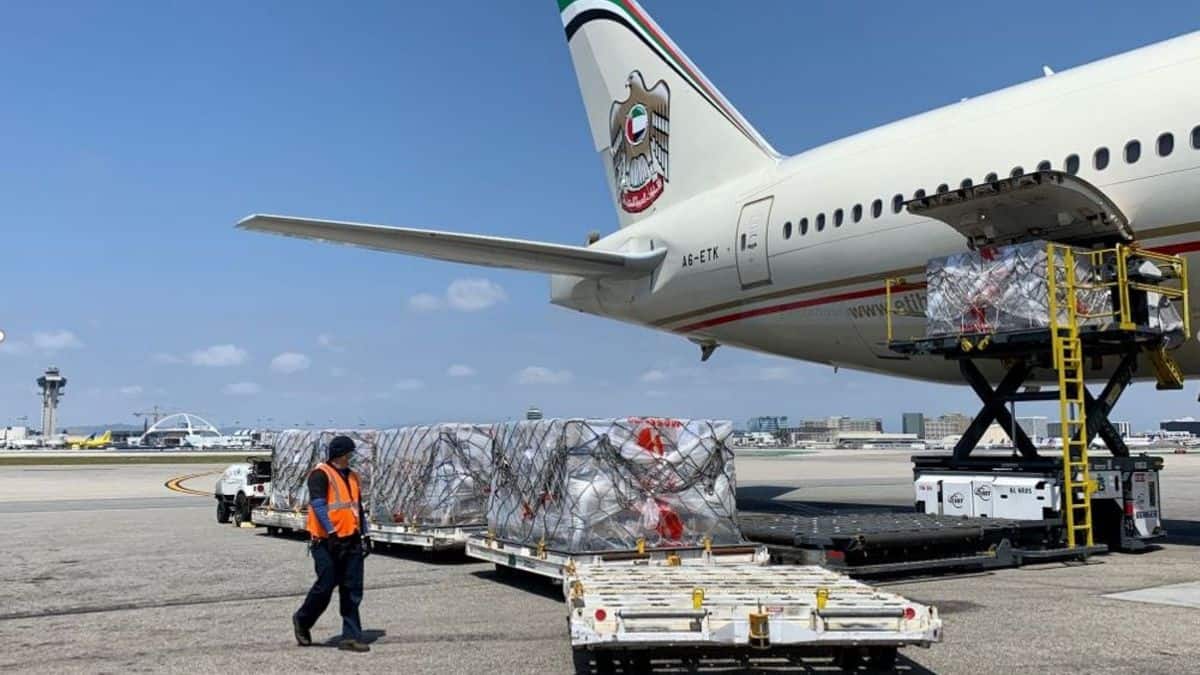(Updated June 13, 2020, 1 P.M.)
Airfreight rates continue to normalize this month on the main trade lanes from China to the U.S. and Europe as demand softens from the peak in mid-May, according to freight forwarders and airline analysts.
Shippers are paying about $7/kilogram outbound China to Europe, which is about 2.5 times the rate at the start of the year and similar to the price in April, data from The Air Cargo Index shows. Three or four weeks ago, rates were double or more. Rates are also down to about $5.75/kilogram out of China to the U.S.
Capacity is still very tight in many parts of the world because there is a dearth of passenger aircraft operating that can offer lower-deck space to shippers. The industry is short about a quarter of the normal airlift because airlines parked fleets when the coronavirus spread, and much of the available cargo space is going to medical supplies for the response effort.
But logistics companies say demand for personal protective equipment has tapered off a bit as healthcare organizations build up stocks and procurement becomes less chaotic with the departure of newbie groups that raced to find suppliers, but couldn’t always execute deliveries at acceptable costs.
Medical supply demand could be in a temporary lull, though, as some doctors say the urgent need is shifting from face masks and respirators to hospital gowns and other items. Meanwhile, the rate of growth for new COVID cases is rapidly climbing in many U.S. states and could require a a new surge of protective and therapeutic equipment brought by air.
Airlines have slightly reduced capacity with cargo-only passenger freighters as the urgency for personal protective equipment decreases. In the first week of June, passenger freighter capacity from China declined 8%, a decrease of 2,000 tons from the prior week, according to Accenture. The pullback was across all regions, led by carriers in North America with a 26% decrease and the Middle East and Southeast Asia down 21%.
In the U.S., Europe and Asia, passenger airlines are gradually adding more flights, including on international routes, which should alleviate some capacity tightness. Cathay Pacific is running at about 4% of its normal schedule in June and said it will be at about 9% capacity in July.
China’s economy is nearing full speed and its air cargo capacity is 7% above the busy pre-Chinese New Year period in late January. South Korea has also managed to mitigate the impact on its air cargo capacity and is 9% above January levels, Accenture said in its report. Air cargo capacity is still below par in the U.S. (-38%) and UK (-54%).
In Europe, export demand is picking up slowly and the number of spot rate requests is increasing, Flexport, a freight forwarder headquartered in San Francisco, said in a customer update. Transshipment hubs in the Middle East, such as Doha, are getting congested due to increased volumes and the Muslim holiday of Ramadan.
Some U.S. gateways, such as Chicago and Los Angeles, are experiencing heavy congestion at certain cargo terminals, with delays getting cargo of up to a week, Flexport said.
Wen-Parker Logistics in Ohio told customers airfreight space is very tight in India, Bangladesh, Sri Lanka and the Philippines, where governments have severely restricted passenger flights to protect against spreading coronavirus. Capacity is also limited in Ho Chi Minh City, Vietnam, and the company anticipates rates going up there throughout June. The situation is better in Hanoi, where shipments can reach the U.S. in five days.
(Click here for more FreightWaves stories by Eric Kulisch)











